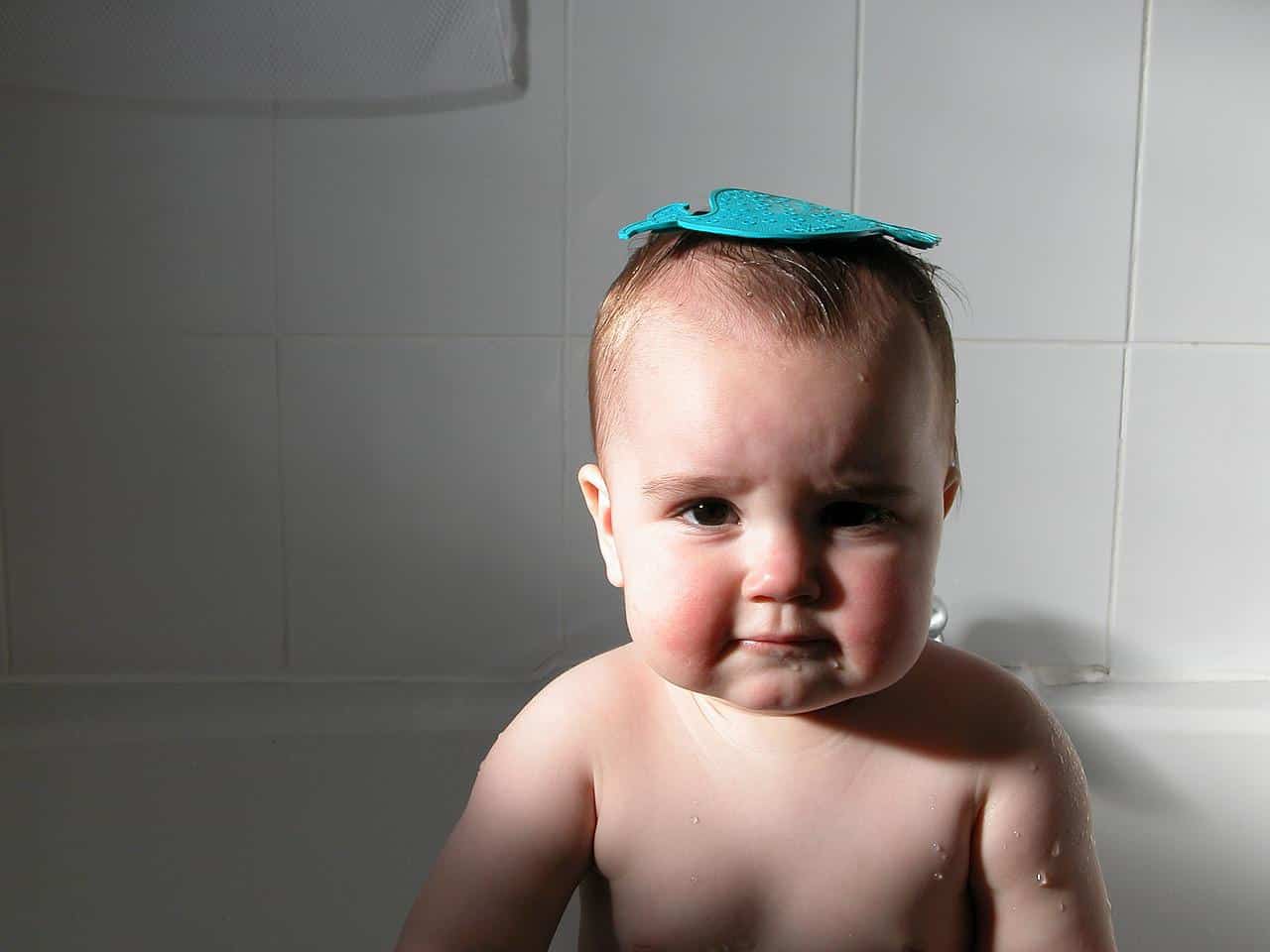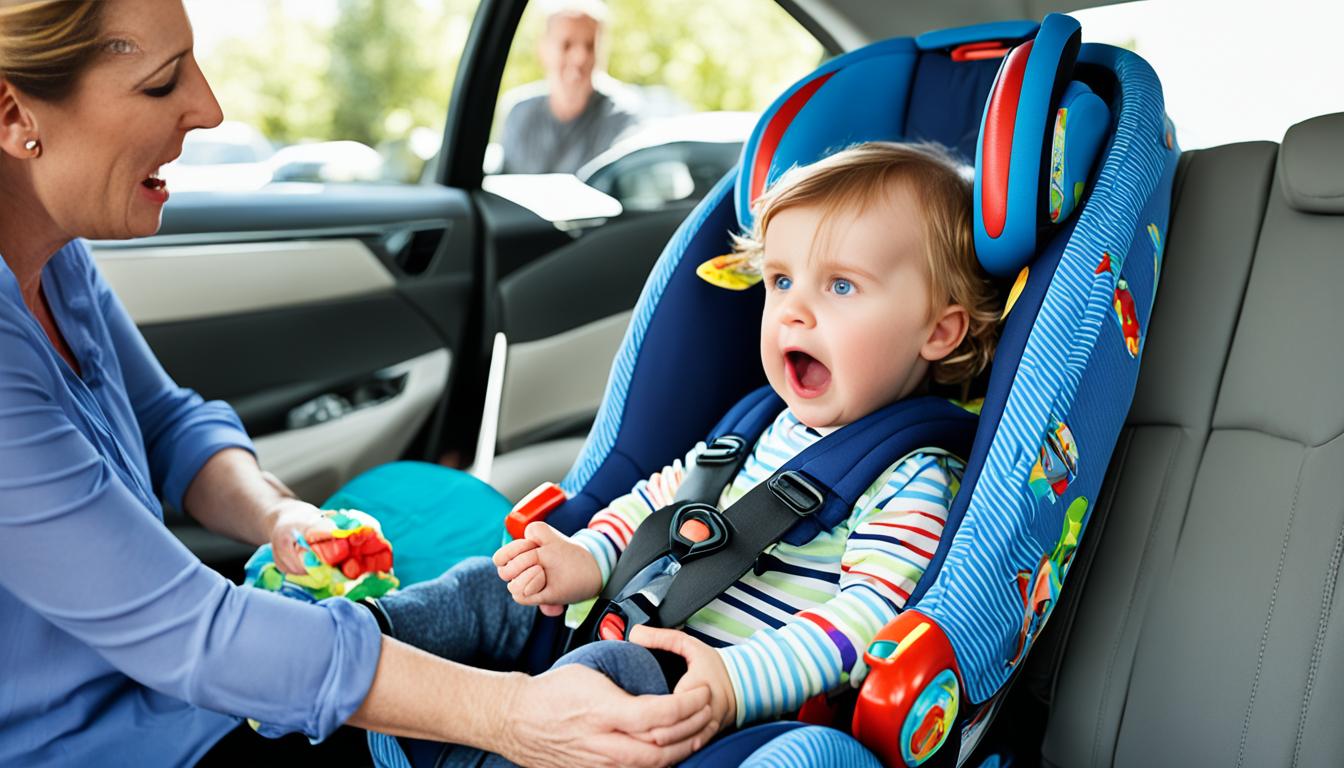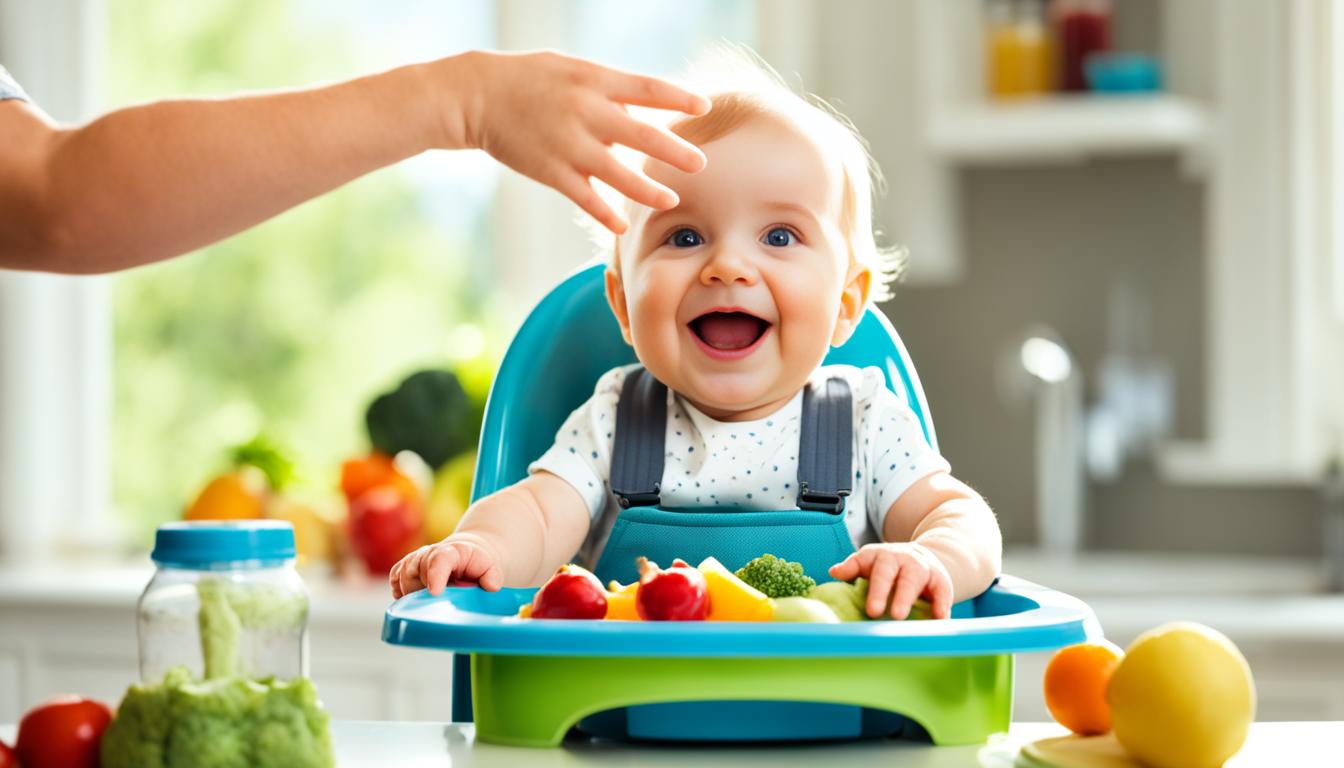My Baby Swallowed Bath Water: What Do I Do?
Many babies and parents alike can find enjoyment and relaxation during bathtime. There’s something about bubbles and rubber duckies that can put a smile on kids and adults.
Bathing also comes with health benefits for your youngster. Any parent will want to keep their baby clean and free from germs and viruses. But bathtime can bring parents and kids closer and help infants develop their social and communication skills.
But bathing a baby is not that easy, especially if they can’t keep their mouth to themselves. And we’re not just talking about them babbling in the bath. We’re talking about your baby accidentally drinking bath water!
Skip To The Following Sections
- What Happens When My Baby Swallows Bath Water?
- What Do I Do if My Baby Swallowed Bath Water?
- What About “Dry Drowning” or “Secondary Drowning?”
- How Do I Give My Baby a Safe Bath?
- Choosing Safe Bath Products for Babies
- Bath Safety Accessories and Equipment
- Establishing Nurturing Bathing Routines for Your Baby’s Well-being
- FAQ:
- Conclusion
What Happens When My Baby Swallows Bath Water?
You might have tried drinking bath water before, accidentally or purposely. While tub water isn’t the most enjoyable drink in the world, it’s generally non-toxic for adults.
Can we say the same for babies? According to the Missouri Poison Center, bath water has a low risk of causing danger to your baby.
Tub water is a concoction of soap, germs, and dead skin cells. But those gunks are diluted in water to the point of being not-so-dangerous.
However, if your child does drink a large amount of bath water, they might experience some symptoms. These include minor stomachache, nausea, and vomiting.
What Do I Do if My Baby Swallowed Bath Water?
If you catch your baby swallowing bath water, don’t panic. There is a chance that your baby won’t experience any side effects if they just swallowed a bit of bath water.
Take your baby out of the bath and wipe their mouth with a clean towel. You should also give your child a bit of drinking water to dilute the bath water inside their body.
If your baby drinks a large amount of bath water and is showing symptoms, immediately call your local poison control center for assistance. You can also contact your doctor or poison control center for further information on what to do in the future.
What About “Dry Drowning” or “Secondary Drowning?”
You might have heard parents sharing stories about their kids dry drowning while out swimming. While the terms dry drowning and secondary drowning aren’t recognized as medical terms, they’re still legitimate complications young children experience.
Dry drowning is when water enters the airway and causes the vocal cords to spasm and close up. Dry drowning makes breathing hard for a child, and the symptoms of dry drowning are immediate and noticeable.
Meanwhile, secondary drowning is when water enters the lung. The water irritates the lungs and causes a condition called pulmonary edema. This fluid build-up in the lungs can cause symptoms like difficulty breathing, coughing, and palpitations. You might also see behavioral changes because of poor oxygen levels in the brain.
Fortunately, dry and secondary drowning are rare and only makeup 1-2% of drowning cases. However, you might want to think twice about leaving your baby swimming alone in the tub or pool.
How Do I Give My Baby a Safe Bath?
Bathtime can be a fun experience for a baby. But proper precautions should be observed to avoid accidents. While accidentally drinking bath water isn’t fatal, there are other potential misfortunes that we must look out for.
Always keep your eyes glued to your baby while in the bath. While kids can play and splash around the tub, they might decide to climb out or dunk their heads into the water. So always keep a good hold on your baby while in the tub.
An adult-size tub is too big for an infant, and they might slip and fall into the water. An infant tub or sink is a safer option for bathtime. You also control how much water you pour into your kid’s bath.
Speaking of water: use warm (not hot) water for your baby’s bath. Aim for temperatures 120⁰F (38⁰C) or lower to avoid burning yourself or your baby. Be gentle while you bathe your baby, and use soaps sparingly.
If you start seeing symptoms of dry or secondary drowning, immediately pull your baby out of the bath. While mild cases go away on their own, a medical check-up can help determine if your baby is safe or not.
Take your baby to the emergency room if symptoms don’t improve. Cases of dry and secondary drowning are rare but not impossible.
Bathing your child should be a fun and enjoyable moment. However, don’t forget to err on the side of caution, especially if water is involved.
Choosing Safe Bath Products for Babies
When it comes to choosing bath products for your precious little one, it’s important to prioritize their safety and well-being. Here’s how you can make informed decisions and opt for baby-friendly products that avoid harmful substances:
- Mindful Ingredient Check: Before purchasing any bath product, examine the ingredient list. Avoid products containing toxic ingredients like sulfates, parabens, and fragrances. Opt for products with natural and gentle components that won’t irritate your baby’s sensitive skin.
- Non-Toxic Shampoos and Soaps: Choose baby shampoos and soaps that are specifically formulated for delicate skin. Look for options that are free from harmful ingredients, such as sulfates and artificial dyes. Mild, fragrance-free, and hypoallergenic options are great choices to keep your baby’s skin healthy.
- Test on a Small Area: Before using a new product, perform a patch test on a small area of your baby’s skin to ensure they don’t have an adverse reaction. This can help you identify any potential allergies or sensitivities.
- Minimal Use of Products: Babies have sensitive skin that doesn’t require excessive cleansing. Use bath products sparingly to avoid over-drying their skin and disrupting the natural balance.
- Natural and Organic Alternatives: Consider using natural and organic bath products that are free from harmful chemicals. These options often use plant-based ingredients that are gentle and soothing for your baby’s skin.
- Moisturizing After Bath: After the bath, apply a gentle baby lotion or oil to keep your baby’s skin moisturized. Look for products with natural emollients like shea butter or coconut oil to maintain their skin’s softness.
By making well-informed choices and selecting bath products that prioritize your baby’s health and comfort, you can ensure that their bath experience is enjoyable, nurturing, and free from harmful substances.
Bath Safety Accessories and Equipment
To ensure your baby’s bath time is both enjoyable and safe, consider incorporating the right bath safety accessories and equipment. These tools can prevent slips, provide support, and minimize the risk of accidents:
- Baby Bath Seats and Suction Seats: Utilize specialized baby bath seats that securely attach to the tub’s surface. These seats offer stability and prevent your baby from sliding or slipping in the water. Suction seats with non-slip bottoms are particularly useful for keeping your baby comfortably in place.
- Bath Mats: Place a bath mat with strong suction cups on the bottom of the tub. This textured surface enhances grip and reduces the chances of your baby sliding around during the bath.
- Baby Bathtubs: If your baby has outgrown the sink but isn’t quite ready for the larger tub, consider using a baby bathtub. These smaller tubs provide a snug environment that’s easier to manage and ensures your baby’s safety.
- Water Temperature Indicators: Some baby bath accessories come with built-in water temperature indicators. These devices help you monitor the water temperature to ensure it remains within safe limits throughout the bath.
- Proper Water Level: Fill the tub with just a few inches of water, ensuring that it’s shallow enough for your baby’s comfort and safety. This minimizes the risk of accidental submersion and allows you to maintain a better grip on your baby.
- Avoid Slippery Surfaces: While it may be tempting to place toys within your baby’s reach, avoid using slippery toys or items that could create hazards in the tub. Opt for bath-safe toys that are easy to grip and won’t pose a choking risk.
Recognizing and Addressing Water Intoxication
Water intoxication, though rare, is a concern that every parent should be aware of during bath time. Keeping a watchful eye and understanding the signs can help you address this potential risk effectively:
- Symptoms of Water Intoxication: Be vigilant for signs such as vomiting, upset stomach, and behavioral changes, as these could indicate water intoxication. In severe cases, muscle spasms and even unusual symptoms like changes in brain activity might be observed.
- Preventing Water Intoxication: While babies may engage in water play during baths, it’s crucial to limit the amount of water they ingest. Discourage activities that involve excessive swallowing of bath water, such as blowing bubbles or intentionally drinking from the tub.
- Balancing Play and Safety: Encourage safe and enjoyable water play without risking water intoxication. Offer appropriate bath toys that promote engagement without encouraging drinking or excessive splashing.
- Maintain Adequate Hydration: If your baby swallows a small amount of bath water, offer a bit of drinking water afterward to help dilute any potential intake. This helps maintain hydration while reducing the concentration of ingested water.
- Seek Medical Attention for Severe Symptoms: In cases where symptoms are severe or persist, promptly seek medical attention. While instances of water intoxication are rare, quick medical assessment can provide peace of mind and ensure your baby’s well-being.
- Bathing Moderation: Remember that baths should be a time of enjoyment and bonding, but moderation is key. Too much time spent in water play can increase the likelihood of unintentional water consumption.
Being informed about the signs of water intoxication and taking preventive measures can contribute to a safer and more enjoyable bath time experience for your baby. It’s important to maintain a balance between play and safety to ensure your baby’s health and well-being.
Establishing Nurturing Bathing Routines for Your Baby’s Well-being
Creating a consistent and positive bath time routine not only keeps your baby clean but also fosters a sense of security and bonding. Follow these steps to build a healthy bathing routine that promotes your baby’s overall well-being:
- Choose the Right Time: Select a time when both you and your baby are relaxed, preferably before their feeding or nap time. This ensures that your baby is neither too hungry nor too tired during the bath.
- Gather Supplies: Have everything you need ready, including a soft towel, mild baby soap, a washcloth, and clean clothes. This prevents any interruptions during the bath.
- Maintain a Comfortable Environment: Ensure the room is warm and draft-free. You can use a space heater or warm the room prior to bath time.
- Control the Water Temperature: Test the water temperature before placing your baby in the tub. A water thermometer can be helpful in achieving the ideal temperature. Aim for around 120⁰F (38⁰C) or lower.
- Gentle Cleansing: Use a small amount of baby soap to gently clean your baby’s body. Be cautious around the eyes, ears, and other sensitive areas.
- Bonding Through Massage: Incorporate gentle massage techniques while bathing your baby. This promotes relaxation and enhances the bonding experience.
- Safe Handling: Always keep one hand on your baby while they’re in the water, ensuring their safety and preventing any sudden movements.
- Mindful Interaction: Use bath time as an opportunity to engage with your baby. Talk, sing, and make eye contact to promote social and cognitive development.
- Wrap and Dry: After the bath, wrap your baby in a soft towel and gently pat them dry. Pay attention to the folds of the skin to prevent moisture accumulation.
- Moisturize: Apply a gentle baby lotion or oil to lock in moisture and keep your baby’s skin soft and smooth.
- Bedtime Routine: If bath time is part of your baby’s bedtime routine, follow it up with a calm and cozy environment to signal that it’s time to wind down.
By following these steps, you’ll be able to create a soothing and enjoyable bathing routine that contributes to your baby’s physical and emotional well-being.
FAQ:
How old should my baby be to have their first bath?
The World Health Organization recommends bathing your baby 24 hours after birth. Newborns should only receive sponge baths until their umbilical cord stump is gone.
How often should I bathe my child?
Babies only need a bath three times a week to avoid drying their skin. Babies aren’t prone to sweating and getting dirty, so there’s no reason to give them a bath every day.
Can my baby drown while taking a bath?
A baby can drown if left unattended in a bath. Looking away for just one minute can result in your baby accidentally injuring or drowning themselves.
Conclusion
A refreshing bath is something a baby needs every now and then. It keeps them clean and cool, especially during warmer seasons. A bath is also an opportunity for parents and kids to bond and share memories.
But babies can get into sticky situations if left on their own. Some babies can go as far as drinking bath water. While tub water is far from dangerous, you don’t want your baby gulping down a slurry of grime and shampoo.
If your baby drinks bath water, take them out of the tub and wipe their mouth clean. In most cases, nothing bad should happen. But if you do see symptoms like vomiting and nausea, you might want to phone your local poison control.
Untimely events can happen while junior is in the tub. But nothing bad will happen as long as your eyes and hands are glued to your baby.





